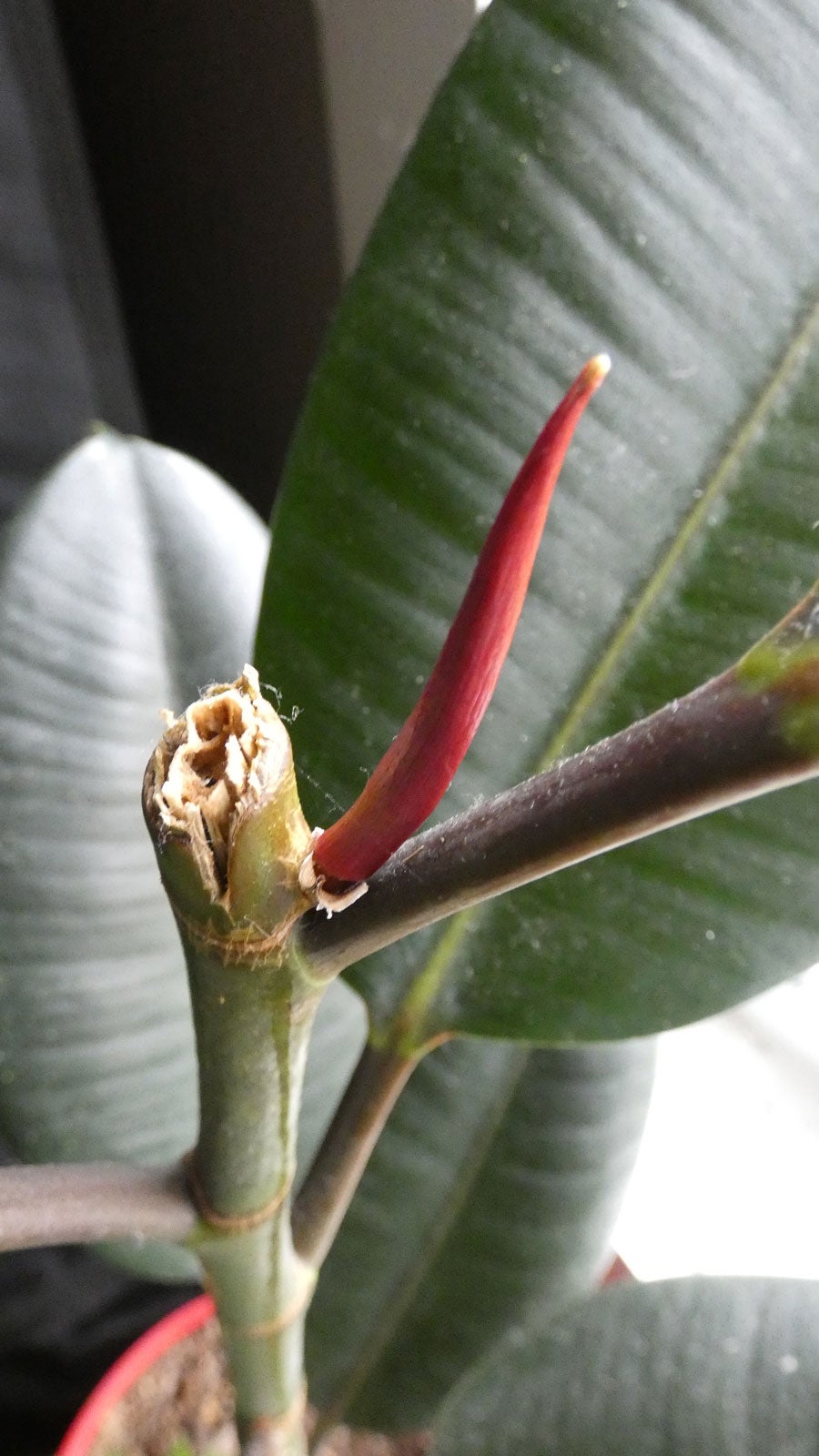Rubber Tree Branching Tips: Why Won’t My Rubber Tree Branch Out


Why won’t my rubber tree branch? This is a common question in garden chat groups and houseplant exchanges. The rubber tree plant (Ficus elastica) can sometimes be temperamental, growing upward and refusing to grow side branches. There are a few reasons why your rubber tree won’t branch. Let’s take a look and see if we can get your rubber tree branching this year.
Pruning a Rubber Tree for Branching
The most common way of correcting a rubber tree that won’t branch is to break apical dominance. In layman’s terms, this means removing the top growth on the main stem, thus re-directing a hormone called auxin downward, where it will encourage branches to sprout on down the stem. This is best done when the plant is young. Older plants do not like their leafy top canopy disturbed.
When pruning a rubber tree for branching, make the cuts while the plant is actively growing, in March through October. The top cut is most important. Remove the stem and leaves as far down as you like. With patience, the parts you remove can be rooted to start more plants.
Cut at 1/4 inch (6 mm.) above a leaf scar (a line where a leaf previously grew) or a leaf node. You may nick or lightly slice the leaf scar with sharp pruners to further encourage a new leaf to grow there.
How to Get Rubber Trees to Branch with Specialized Care
Other ways to encourage rubber tree branching, or to use in combination with the cuts, include freshening the soil with a composted mixture, watering and feeding, and providing proper light.
- Upgrade Soil: If your rubber tree is large, you might not want to totally remove it from the pot. Mix fresh potting soil with finished compost and loosen the existing soil. Surround the bottom with the fresh soil mix. Loosen the soil near roots if you can do so without breaking them and work in some of the new mixture. Include fresh soil on top too.
- Lighting: Move the container into an area that gets bright light and even a few peeks of morning sun. This plant can gradually be acclimated to a few hours of morning sun. If your plant has been in a low-light area, additional lighting will soon help create additional growth and branching, especially after you’ve made the proper cuts.
- Water: Use lukewarm water for the rubber tree plant, as cold water can cause a shock to the roots. Less water is necessary in winter, but soil should remain slightly moist. Yellowing or dropping leaves indicate the soil is too wet. Withhold water until it has dried out. Water in spring when growth resumes. Water well before fertilization.
- Feeding: Fertilize young plants with a high phosphorus product to encourage root development. As older plants put out new branches and leaves, feed monthly with a nitrogen-based food to help foliage more fully develop.
Now that you’ve learned how to get rubber trees to branch, use some or all of these steps to get your plant in shape this year. New branches and new leaves will appear before the plant enters dormancy in autumn.
Sign up for the Gardening Know How newsletter today and receive a free copy of our e-book "How to Grow Delicious Tomatoes".

Becca Badgett was a regular contributor to Gardening Know How for ten years. Co-author of the book How to Grow an EMERGENCY Garden, Becca specializes in succulent and cactus gardening.